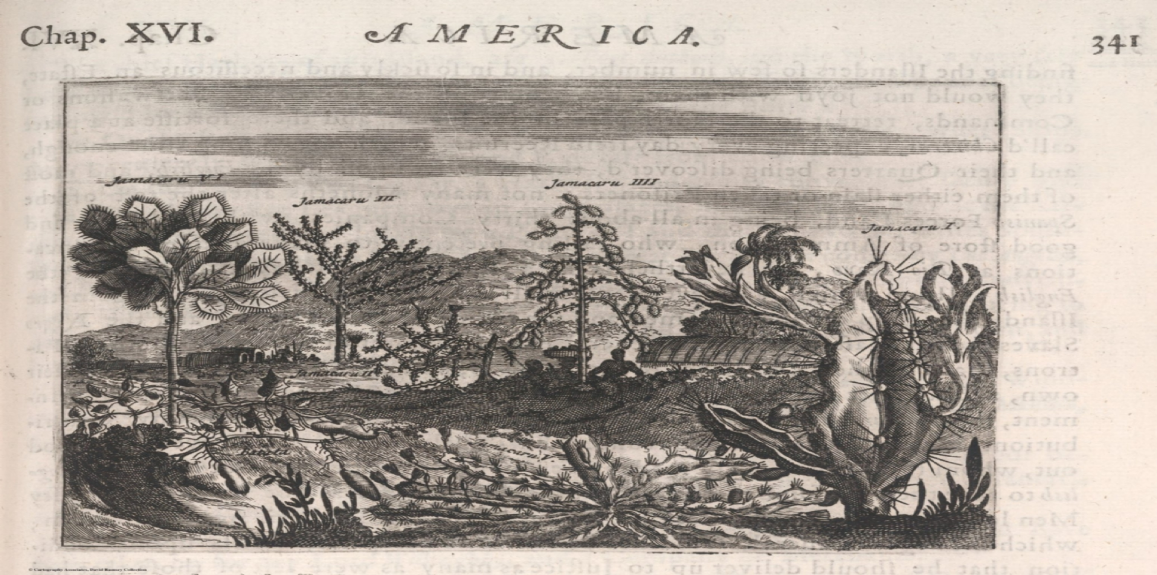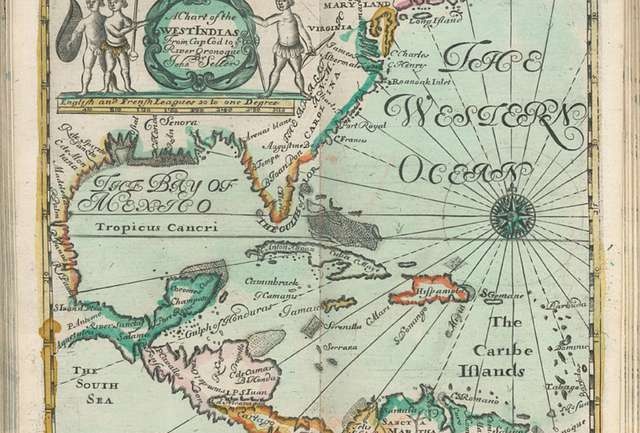[Edited by Miriam Campopiano]
Jamaica became an English colony in 1655. As a matter of fact the island was not the main goal of the expedition that eventually took possession of it. When the English troops sailed in December 1654, their aim was to conquer the Spanish West Indies. The expedition was strongly desired and organised by Cromwell and it is known as the Western Design. The English tried to attack their main target, the Spanish territory of Hispaniola, but they did not succeed. The troops were undisciplined and the leadership was weak, the soldiers were unprepared for the tropical climate and all of this led to a disastrous attempt to break the solidly established Spanish control. So, the English expedition turned to a target more within their reach: the less defended island of Jamaica.
We find news of the expedition and its report in Amerigo Salvetti’s avvisi:
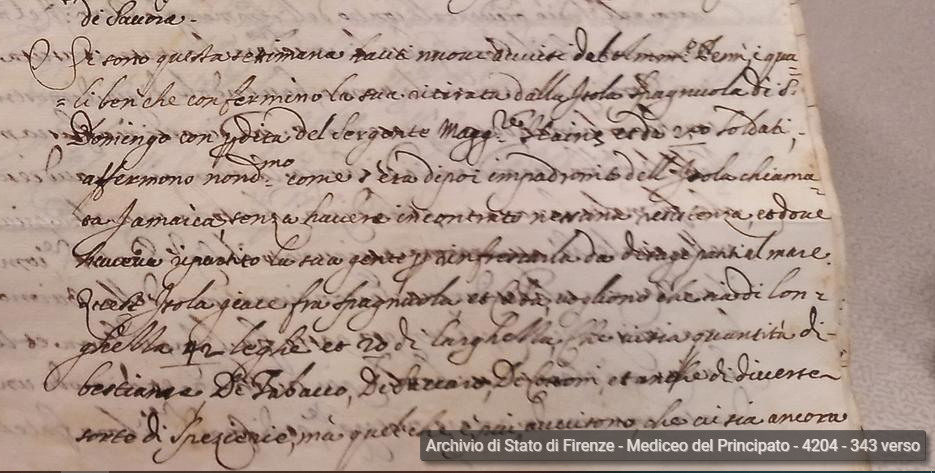
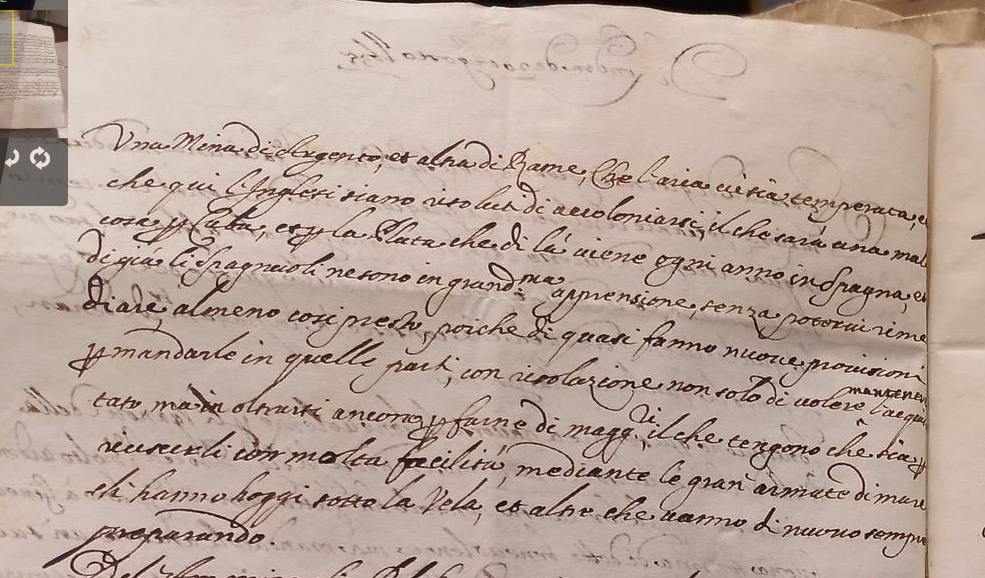
«Si sono questa settimana hauti nuovi avvisi del’ammiraglio Penn i quali benché confermino la sua ritirata dalla isola Spagnuola di S. Domingo, […] affermano nondimeno, come s’era dipoi impadronito dell’isola chiamata Jamaica[… ]. Quest’isola giace fra Spagnuola et Cuba, vogliono che sia di longhezza 42 leghe et 20 di larghezza che vi sia quantità di bestiame, di tabacco, di succaro, di cottoni, et anche di diverse sorte di spezierie, ma quel che è più avvisono che sia ancora una mina di argento et altra di rame, che l’aria vi sia temperata, et che qui l’inglesi siano risoluti di accoloniarsi, il che sarà una mala cosa per Cuba et per la plata che di là viene ogni anno in Spagna, et di già li spagnuoli ne sono in grandissima apprensione, senza potervi rimediare, almeno così presto, poiché di qua si fanno nuove provisioni per mandarle in quelle parti, con risoluzione non solo di volere mantenere l’acquistato, ma inoltrarsi ancora per farne di maggiori; il che tengono che sia per riuscirli con molta facilità, mediante le gran armate di mare, ch’hanno hoggi sotto la vela, et altre che vanno di nuovo sempre preparando».
«This week, new reports have been received from Admiral Penn, which, although they confirm his retreat from the Spanish island of San Domingo, […], nevertheless, they affirm that he then took possession of the island called Jamaica[…]. This island lies between Spain and Cuba, they say that it is 42 leagues long and 20 wide, that there are plenty of livestock, tobacco, sugar, cotton, and even different kinds of spices, but what is more, they say that there is a silver mine and another of copper, that the air is temperate, and that the English are resolved to settle here, which will be a bad thing for Cuba and for the gold that comes from there every year to Spain, and the Spaniards are already very worried about it, without being able to remedy it, at least so soon, since new provisions are being made from here to send them to those parts, with the resolution not only of wanting to maintain what they have acquired, but to go on to make more; which they believe will be achieved with great ease, by means of the great armies of the sea, which they now have under sail, and others that are being prepared again and again».
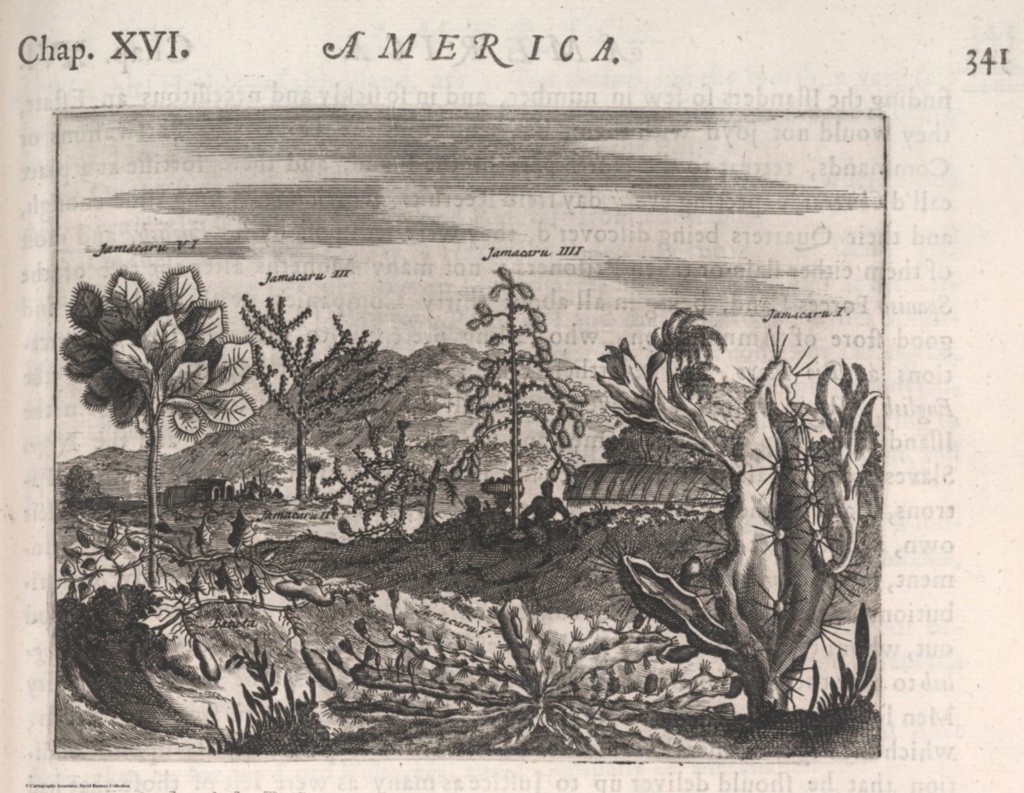
A.Montanus, Five large cacti and a sweet potato plant (Ipomea batatas), c. 1671, Wellcome Library London
http://catalogue.wellcomelibrary.org/record=b1182500
But Salvetti was not the only one who talked about the new conquest. Also other documents report about the island and its richness[1]. In the documents we can also find, other than the description of the island, the account of the conquest itself.
The English troops marched practically unopposed on the island. They entered effortlessly into the only settlement – Santiago de la Vega, today called Spanish Town. The settlement was abandoned by the residents at the sight of the English, so the troops found it empty. The Spanish thought that this was a short-term raid, as had happened in the past, and at first they did not consider the expedition a colonial conquest. The inhabitants including the Spaniards offered resistance. A group of free black men, descended from African slaves who freed themselves and were known as Jamaican Maroon, were precious allies for the Spanish resistance, but in the end, English had the upper hand.
After a period of negotiation, the Spanish signed the treaty–or as the English preferred to call it, the articles of capitulation.
The expedition succeeded in conquering an island that was larger than the ones English possessed in the West Indies and that had a very convenient position, at the centre of the Caribbean Sea. But this outcome was not the one desired in the homeland. The expedition was branded as a failure because it did not weaken Spanish control over the area as had been hoped. The English expected an easy victory over the Catholics rivals due to their alleged moral superiority and God’s favour towards them. Now that the expedition had failed, also those concepts were questioned. That the English had been attacked both in Hispaniola and Jamaica by African descendants and mixed-race men during the expedition only worsened the disgrace. The English did not expect to find non-Europeans defending the island, expecting instead to find them joining forces with the expedition against Spanish rule, but this did not happen.
Although effective English control over the island commenced in 1655, Spain did not recognise English rule in Jamaica until 1670 with the Treaty of Madrid.
Further readings
- Black Clinton V., The History of Jamaica, Collins Educational, London 1983.
- Gardina Pestana C., English Character and the Fiasco of the Western Design, in “Early American Studies” , Spring 2005, Vol. 3, No. 1 (Spring 2005), pp. 1-31.
- Eadem, The English Conquest of Jamaica: Oliver Cromwell’s Bid for Empire, Harvard University Press, Cambridge-London 2017.
- Rodger N.A.M., The Command of the Ocean: A Naval History of Britain 1649-1815, Norton, New York 2005.
- Taylor S A. G., The Western Design: An Account of Cromwell’s Expedition to the Caribbean, Kingston: Institute of Jamaica and the Jamaica Historical Society, 1965.
[1] Cfr. Archivio di Stato di Firenze, Mediceo del Principato, 4204, f 55r, 02 Novembre 1655.


